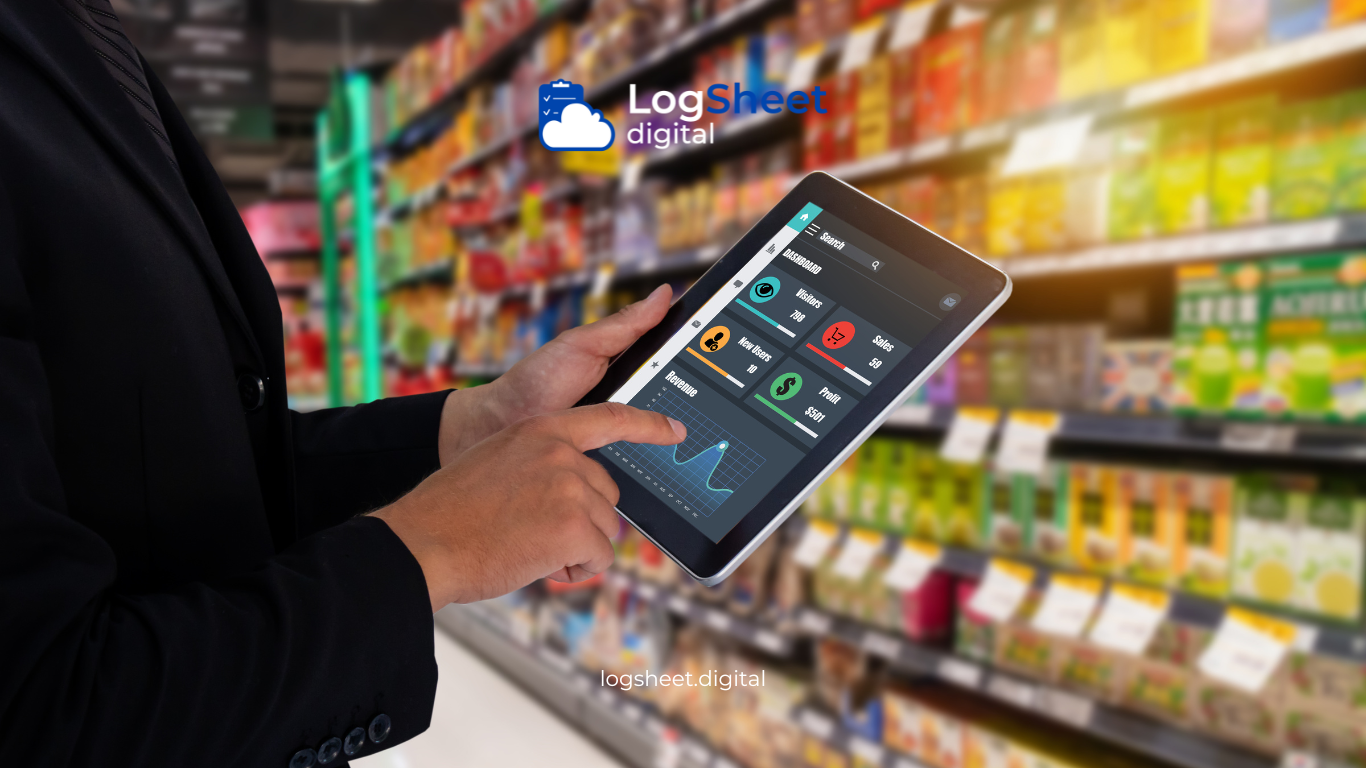In an increasingly competitive industrial world, product traceability and measurement are key factors in maintaining quality, improving efficiency, and meeting regulations. Digital technology now offers innovative solutions, one of which is the implementation of digital logsheet. Digital logsheet replace manual logs that are prone to human error, enhance data transparency, and enable more efficient monitoring.
This article will discuss the importance of digital logsheet, their application in industries, and their benefits in improving product traceability and measurement.
What is a Digital Logsheet?

Read More: Implementing Digital Logsheets for Safety Equipment Monitoring
A digital logsheet is a software-based recording system that allows data to be recorded, monitored, and analyzed in real-time. This system is usually integrated with devices such as sensors, the Internet of Things (IoT), or other information management systems to provide a comprehensive view of operational data.
Key Functions of a Digital Logsheet
- Automatic Recording: Minimizes manual errors.
- Real-Time Tracking: Data can be accessed anytime and anywhere.
- Data Analysis: Provides valuable insights for decision-making.
- Centralized Storage: Facilitates access and integration between teams.
The Importance of Product Measurement and Tracking

Read More: Sustainability in Safety: How Digital Logsheets Impact Industry
Product measurement and tracking are essential elements in maintaining quality and sustainability in the production process. Without a reliable recording system, companies risk facing:
- Decreased Quality: Tracking errors can lead to defective products.
- Regulatory Non-compliance: Many industries, such as pharmaceuticals and food, require detailed documentation.
- Financial Losses: Inaccurate data can result in excess or insufficient inventory.
Benefits of Implementing Digital Logsheets

Read More: Data Security in Digital Logsheets: Challenges and Security Strategies
1. Higher Data Accuracy
Digital logsheets reduce the likelihood of recording errors that are common in manual logs. With automatic sensors, the data recorded is more accurate and consistent.
2. Operational Efficiency
Automatic recording speeds up the production process and reduces administrative workload, allowing employees to focus on more strategic tasks.
3. Transparency and Regulatory Compliance
With easily accessible digital records, companies can more easily comply with audit standards and regulations. This system also enables quick batch tracking in case of product issues.
4. Real-Time Monitoring
With a digital logsheet, operational data can be monitored directly, helping companies to quickly identify and address emerging issues.
5. Ease of System Integration
Digital logsheets are often designed to integrate with other technologies like ERP (Enterprise Resource Planning), CRM (Customer Relationship Management), and IoT systems, providing greater efficiency in data management.
Steps to Implement a Digital Logsheet

Read More: Digital Logsheets: Transparency and Security in Warehouses
1. Needs Analysis
Before implementing a digital logsheet, companies need to identify their specific needs, such as the type of data to be recorded, data volume, and recording objectives.
2. Choosing the Platform or Software
Selecting the right digital logsheet platform is a crucial step. Factors to consider include compatibility, features, and scalability.
3. Employee Training
Employees need to be trained on how to use the new system, including how to input data, read reports, and utilize analytical features.
4. Integration with Existing Systems
The digital logsheet must be integrated with other existing systems in the company, such as inventory management or production management systems.
5. Trial and Evaluation
Before full implementation, conduct trials to ensure the system works as expected. Evaluate the results and make adjustments if necessary.
Case Studies: Implementing Digital Logsheets in Industries

Read More: Improving Industrial Security with Digital Logsheets
1. Food and Beverage Industry
A food processing company successfully reduced waste by 20% after implementing digital logsheets to track raw materials and finished products.
2. Electronics Manufacturing Industry
In this sector, digital logsheets helped track thousands of components in the production process, increasing efficiency by 30% compared to manual methods.
3. Pharmaceutical Industry
Digital logsheets allow for meticulous and transparent recording, making it easier to comply with regulatory audits and ensuring product safety.
Challenges in Implementing Digital Logsheets

Read More: Effectiveness of Digital Logsheets in Reducing Calibration Defects
1. Initial Costs
Implementing new technology often requires a significant investment, including hardware, software, and training.
2. Cultural Change in the Workplace
Switching from manual methods to digital requires a cultural shift within the company, which takes time and commitment from all parties involved.
3. Data Security
Digital data is vulnerable to cyberattacks, so protecting the data becomes a top priority in the implementation of digital logsheets.
Tips for Successfully Adopting Digital Logsheets

Read More: Optimizing the Calibration Process Through Digital Logsheet Implementation
- Involve All Parties: Ensure that employees at all levels understand the benefits of the new system.
- Choose a Trusted Solution Provider: Select a vendor with experience and good after-sales service.
- Implement Gradually: A phased implementation helps the company adjust to the new system.
- Focus on Data Security: Ensure the digital logsheet system has security features like data encryption and role-based access.
Conclusion

Read More: Digital Logsheet as the Foundation for Smart Calibration in Industry
Implementing digital logsheets is a strategic step towards improving product measurement and tracking in the digital era. By leveraging this technology, companies can record data more accurately, track products in real time, and ensure regulatory compliance.
Although there are challenges such as initial costs and the need for data security, the long-term benefits of operational efficiency, transparency, and data-driven decision-making far outweigh the drawbacks. With proper preparation, digital logsheets can become a key solution to improving competitiveness in the global market.
Start your digital transformation journey now and be part of a more modern, efficient, and reliable industry!






comments (0)